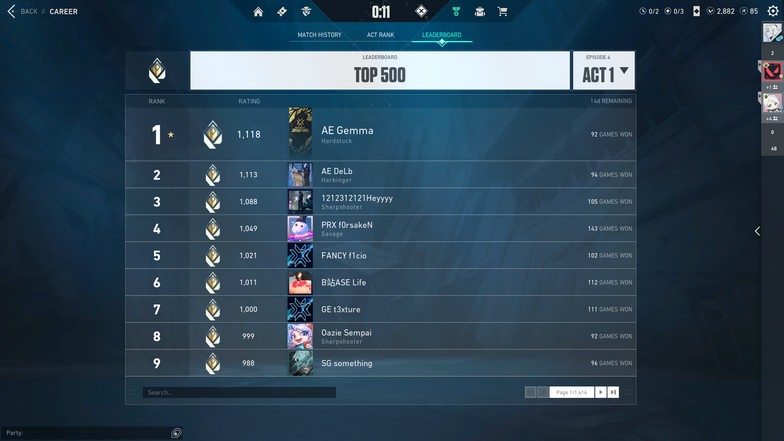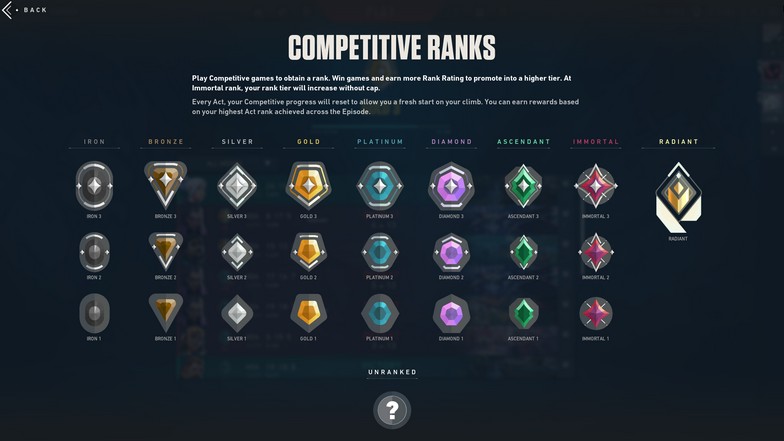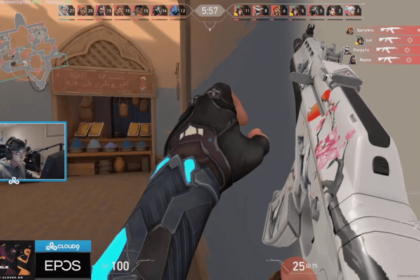Like all competitive multiplayer games, ranked mode are always the go-to for players. It is one way of determining your skill level and try to rise above it every single day.
Valorant’s ranking system is a bit complicated. They implement a lot of mechanics to fight smurfs, such as hidden ELOs, rank skipping, and others.
We will cover all of those to help you learn more about Valorant’s competitive mode. You can even adjust your playstyle for it to help you rank up faster.
Ranked Mode Mechanics

The ranked game is similar to unrated matches. Both teams will race to getting 13 wins. Both teams will have equal chances to perform on the attacking side and on the defending side.
There are 12 rounds per half, and the half switches the sides.
The only difference in ranked mode compared to unrated is that when the game is tied to 12-12, the game will go into a different overtime format.
The format for the overtime will be a win-by-two basis. Each team will have equal chances of winning the game because each team will play once on the attacking side and on the defending side.
Every player will have their economy reset to $5000 and have 4 points each to their ultimates. This resets each round, so do not worry about spending it all on one side.
There is also an option just to end the match with a draw by majority vote.
If the game has not been decided by one round of overtime, it will require less players to have the match ended by a draw. The process goes as follows:
- First voting: 6 player votes needed for a draw
- Second voting: 3 player votes needed for a draw
- Third voting: 1 player vote needed for a draw
Players cannot lose rank if the match ends in a draw, but instead some might gain a boost to their rank based on their performance.
Teams can also choose to surrender if they feel that they absolutely have no chance at winning. Some players might get high ping or even disconnect. The team voting will require 100% of the team to agree before surrendering.
Group Matchmaking
To queue in ranked games with a party, everyone must have at least three rank difference apart from each other. A Platinum 1 can queue with a Diamond 1, but not a Diamond 2.
You cannot queue in ranked with four players. It has to be 2, 3, or 5 in a party. If you are playing with a whole stack, you can queue with any rank. However, if the rank difference rule isn’t followed, you’ll have a -25% rank rating reduction on your wins.
You can still queue as a full group if you want, but you should know about the penalty before queuing.
When you play as a group, you’ll fight against another group. The system wants groups to queue against each other to balance the match.
With the full group mechanics discussed, you should assume that playing against a group might mean fighting against someone way above your ELO.
Ranks

The ranks are shown in the image above. There are nine rank tiers with three corresponding levels in each of the tier except for the Radiant rank.
If you get to a specific rank and the season resets, you must do placements again. The placement mechanic depends on the type of reset – a new episode or a new act.
Episodes are yearly resets while acts are seasonal resets. On episode resets, you’ll have to do five placement matches again.
The rank you’ll get depends on your performance during the five placement matches. You can never place on the Immortal or Radiant rank on episode resets. Everyone gets dropped down to grind to their rank again. Some players call this the ‘hard reset.’
On act resets, you’ll have to play one placement match. The rank you’ll get on act resets will just be your previous rank before the act reset.
Unlocking Ranked Mode
To unlock ranked mode, you must play a total of 20 unrated matches. This gives players ample time to unlock at least two new agents to their roster. This also gives enough time for players to familiarize themselves with all the agents in the game.
If you want to achieve a higher rank for the placement matches, make sure to practice more in unrated matches. Once ranked is unlocked, you must go through 5 placement matches to finally get your rank.
Ranking Up

The ranking system in Valorant is quite straightforward. Win games, and you will rank up. Lose games, and you will rank down.
There are a few more factors involved in the ranking system. You can rank up faster if you perform well. This means that your score will be a factor too.
Getting MVP’s after the match will also help you boost your rank. The game will also notice if you are always crushing the enemy team.
This is their way of finding smurfs and getting them immediately to their current rank. This kind of system also helps them track rank boosters and deal with them appropriately.
You can also lose significantly more rank by surrendering, so it is best always to try to win no matter the gap.
If you perform badly, you’ll get lower rank points even in wins compared to others.
Make sure to perform at your best when queuing, as it could help you lessen the loses and increase the winnings.
Everything is designed to help you get to your rank, based on your skill level, as quickly as possible.
You can also earn more rank rating points depending on the final score. For example, if you perform decently with a 10-8 score but placed 4th on the top fragging list on your team, you’ll still get many rank points if the final score is a landslide, like a 13-2.
The system is trying to pit players as close as possible in terms of skill. The reset definitely helps when it comes to making Valorant competitive. Players will try their best to get a rank as high as they can within a certain period of time.
This prevents players from feeling stale after attaining a rank they cannot get out of. There is definitely more competitiveness when it comes to placement matches and makes each start of the season as active as possible.
There might be a drop in competitiveness or activity during the last few weeks of the season, but the reset is definitely one of the most anticipated events by players. Most games use this to even feature new additions or updates into their growing game.






